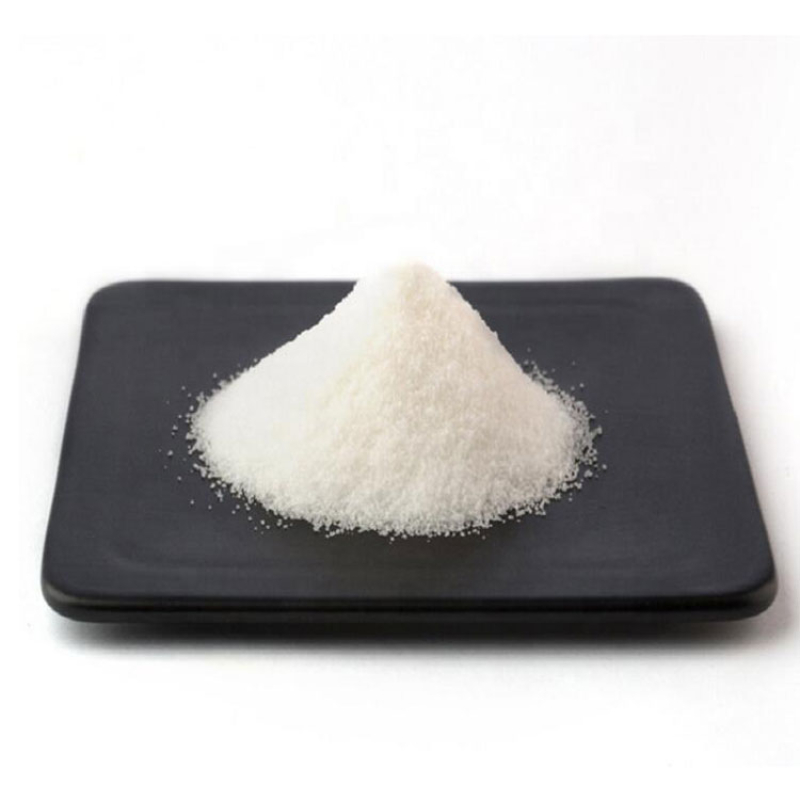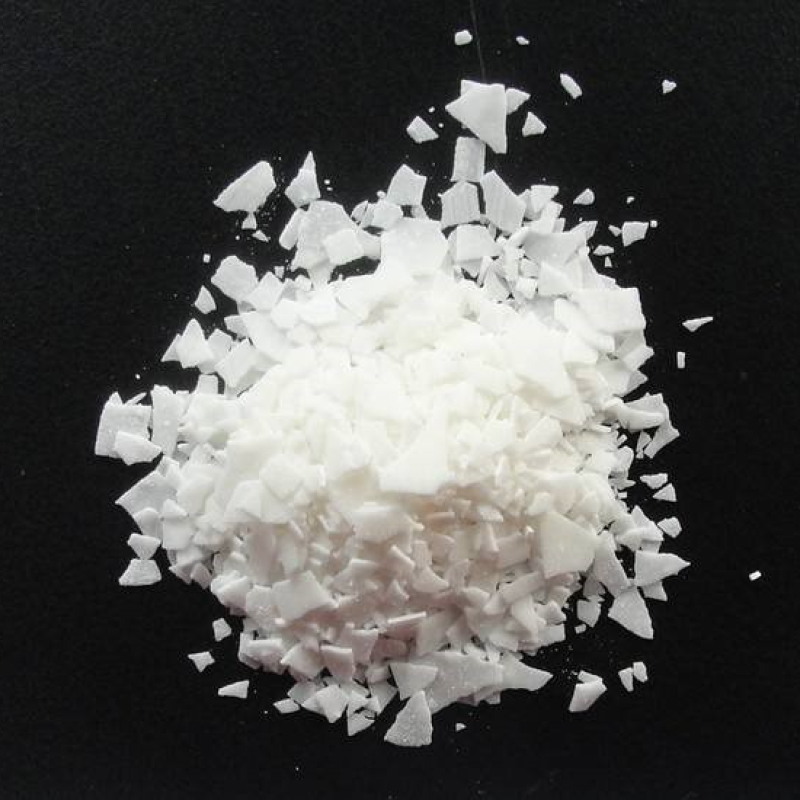Petrolatum CAS#8009-03-8Petrolatum (Vaseline) is the malthenes purified from lubrication oil, the combination of residue oil and cerate. It is an necessary lubricant for medicines, cosmetics, first-class chemical uncooked substances and precision instruments. In China, foremost vaseline merchandise encompass normal vaseline, industrial vaseline and clinical vaseline.
Contact Now
Products Description of 3-MERCAPTOPROPIONIC ACID CAS#107-96-03-Thiopropionic acid is a direct raw material in organic chemicals and is used in pharmaceutical intermediates and electronic chemicals; it is used as an intermediate in the pharmaceutical Fenal, and it is also used as a stabilizer for polyvinyl chloride.
Contact Now
Products Description of Tetramethylammonium hydroxide CAS#75-59-2Tetramethylammonium hydroxide (TMAH), also known as tetramethylammonium hydroxide, is a colorless to light yellow liquid. It is the strongest organic base, very easy to absorb moisture, has a certain ammonia smell, can quickly absorb carbon dioxide in the air, has a low vapor pressure at room temperature, and is completely decomposed and gasified at 135~145°C. High-purity products are treated at 140°C without trace residue. The tetramethylammonium hydroxide solution is colorless, transparent, and has a slight ammonia smell.
Contact Now
Products Description of CARAMEL CAS#8028-89-5Caramel color is one of the food colorings with the longest history of human use. It is also the most widely used and popular food additive currently used by people. It has high color rate and strong coloring ability, reflecting the unique reddish brown color of fermented soy sauce, which is ruddy and bright. It has moderate viscosity, good solubility, high salt tolerance and stable quality.CARAMEL Chemical Propertiesdensity 1.35 g/cm3FEMA 2235 | CARAMEL COLOROdorat 100.00 %.
Contact Now
Products Description of Dimefluthrin CAS#271241-14-6As a new type of pyrethroid hygienic insecticide, cypermethrin has a high protective effect on mosquitoes resistant to allethrin and prallethrin. The pesticide is safe for humans and does not pollute the environment. The dosage of its preparation is as low as 0.015%.Currently, cypermethrin coil mosquito coils mostly use the analysis method provided by Sumitomo Chemical Co., Ltd. of Japan, that is, GC-ECD (electron capture detector) analysis, and the pretreatment method is cumbersome.
Contact Now
Products Description of Tetrabutylammonium iodide CAS#311-28-4Tetrabutylammonium iodide (TBAI) is a commonly used phase transfer catalyst that can increase the reaction rate or effectively promote a variety of chemical reactions. This reagent can be used as an iodine source to generate the iodide required for the reaction in situ, avoiding the use of some unstable and expensive iodides.
Contact Now
Products Description of Zirconium Silicate CAS#10101-52-7Zirconium silicate is a high-quality, low-cost emulsifier that is widely used in various building ceramics, sanitary ceramics, daily-use ceramics, primary ceramics, etc. It has a wide range of applications and a large amount of applications. Zirconium silicate is also further used in the production of color picture tubes in the television industry, emulsified glass in the glass industry, and enamel glazes.
Contact Now
Products Description of Tetrabutylammonium Iodide COA#311-28-4Tetrabutylammonium iodide (TBAI) is a commonly used phase transfer catalyst that can increase the reaction rate or effectively promote a variety of chemical reactions. This reagent can be used as an iodine source to generate the iodide required for the reaction in situ, avoiding the use of some unstable and expensive iodides.
Contact Now
Products Description of Antioxidant 168 CAS#31570-04-4Antioxidant 168 is a phosphite antioxidant with excellent performance. It has strong extraction resistance, is stable against hydrolysis, and can significantly improve the light stability of products. It can be used in combination with a variety of phenolic antioxidants. . For example, Cyanox2777 developed by the American company Cyanamid is a compound of antioxidant 168 and phenolic antioxidant 1790. The combined use of phosphite and phenolic antioxidants can give full play to the synergistic effect.
Contact Now
Products Description of Pyridine CAS#110-86-1Pyridine (molecular formula C6H5N) is a six-membered heterocyclic compound containing a nitrogen atom, that is, a compound generated by replacing a -CH= in a benzene molecule with nitrogen. It is similar to benzene, has the same electronic structure, and is still aromatic, so it is also called nitrogen benzene and nitrogen-benzene. It is a colorless liquid with a special odor at room temperature, with a melting point of -41.6℃ and a boiling point of 115.2℃. It forms an azeotropic mixture with water, and the boiling point is 92-93℃.
Contact Now
Products Description of Natamycin CAS#7681-93-8Natamycin, also known as pimaricin and natamycin, was first isolated from Streptomyces natalensis in 1955. Its activity is far superior to sorbic acid. In June 1982, the US FDA officially approved natamycin for use as a food preservative and classified it as a GRAS product. Natamycin is a highly effective inhibitor of molds, yeasts and fungi. It is used to inhibit molds, yeasts and fungi in food. It is very safe and reliable for the human body and does not affect the flavor of the product.
Contact Now
Products Description of CREMOPHOR (R) A25 CAS#68439-49-6CETETH25 is a nonionic emulsifier obtained by adding natural saturated fatty alcohol and ethylene oxide. CETETH25 (HLB15-17) is an oil-in-water (O/W) emulsifier. When used together with CETETH6, it forms a pair of complementary emulsifiers. The emulsifier pair has a small amount of use and a strong emulsification ability. The prepared emulsion products have high stability and bright appearance. It can tolerate a certain degree of inorganic salts and extreme pH conditions.
Contact Now
Products Description of 1-(4-Chlorophenyl)Piperazine Dihydrochloride CAS#38869-46-4Para-Chlorophenylpiperazine (pCPP) is a psychoactive drug of the phenylpiperazine class. It is relatively obscure, with limited human use, and produces slightly psychedelic effects.
Contact Now
Products Description of DIMETHYL DICARBONATE CAS#4525-33-1Dimethyldicarbonate (DMDC), also known as Vigorin, is a fruit juice beverage preservative permitted for use in my country's food additives standards (INS No. 242). At room temperature or even low temperature, DMDC has a strong killing ability against many contaminating bacteria in fruit juice beverages. Its antiseptic effect is closely related to the modification and inactivation of key enzyme proteins in the bacteria by DMDC.
Contact Now
Products Description of PHOSPHORIC ACID CAS#78-42-2PHOSPHORIC ACID is widely used as a flame retardant, plasticizer, and extraction agent in the production of chemical companies. Its most important use is the production of hydrogen peroxide.
Contact Now
Products Description of Phenol CAS#108-95-2Phenol, with the chemical formula 𝐶6𝐻5𝑂𝐻C6H6O, is a white crystalline substance known for its versatility and reactivity due to the hydroxyl group attached to the benzene ring. It serves as a key precursor in the synthesis of pharmaceuticals, including aspirin, and is integral to the production of resins, plastics, and synthetic fibers like nylon. Phenol's historical use as a disinfectant highlights its ability to denature proteins and disrupt cell membranes. It also plays a role in the detergent industry and analytical chemistry.
Contact Now
Products Description of Ammonium sulfate CAS#7783-20-2Ammonium sulfate, also known as ammonium sulfate, is the earliest nitrogen fertilizer produced and used at home and abroad. It is usually regarded as a standard nitrogen fertilizer with a nitrogen content of 20% to 30%. Ammonium sulfate is a salt of strong acid and weak base, and its aqueous solution is acidic. Ammonium sulfate is a nitrogen fertilizer and an acidic fertilizer among inorganic fertilizers. Long-term single use will cause soil acidification and hardening, which needs to be improved.
Contact Now
Products Description of Polyisobutylene CAS#9003-27-4Calcium phosphate tribasic (C3161) is plant cell culture tested (0.2 mg/ml) and is appropriate for use in plant cell culture experiments. Calcium phosphate tribasic is utilized to engineer new biomaterials for applications such as bone grafts and fillers. Si-substituted hydroxyapatite (Si-HAp) nanopowder can be incorporated in biodegradable polymer composites or deposited on biocompatible surfaces similar to pure HAp nanopowder (cat. no. 677418).
Contact Now
Products Description of Boron Trifluoride Diethyl Etherate CAS#109-63-7Boron trifluoride is an important Lewis acid catalyst in organic synthesis and plays an important role in organic reactions (such as polymerization, hydrocarbonization, alkylation, isomerization, etc.). It is inconvenient to use trifluoride when it is in gaseous state. In order to adapt to the activity requirements of different reactions, according to the characteristics of trifluoride, it is often combined with polar oxygen- or nitrogen-containing compounds to convert it into a complex with strong stability.
Contact Now
Products Description of Potassium phosphate CAS#778-53-21-Ethyl-2-pyrrolidone is a transdermal absorption-enhancing compound and mechanism of its effect on multilammellar liposome of stratum corneum lipid has been studied.N-Ethyl-2-pyrrolidone is commonly used as a solvent. It has a low boiling point, which makes it suitable for use in low light and at constant pressure. It is also used as an intermediate in the preparation of polycarboxylic acid.
Contact Now
Products Description of EDTA CAS#60-00-4Ethylenediamine can be obtained by cyclizing ethylenediaminetetraacetic acid with formamide. This is a drug primarily used to treat psoriasis, also known as psoriasis. But as an organic synthesis intermediate, it is not the main use of EDTA. EDTA and its salts can undergo complex reactions with a variety of metal ions to form a stable cyclic structure, which can effectively reduce or inhibit side reactions or harmful effects caused by metal ions.
Contact Now
Diethanolamine CAS#111-42-2Diethanolamine is an natural compound. Structurally, it is composed of two ethanol companies () and one amino team (), and belongs to the type of alcoholamine compounds. This shape offers it special chemical properties, which is the groundwork for its position in many fields. It has right solubility and is without difficulty soluble in polar solvents such as water, ethanol and acetone, and can be miscible with water in any proportion. This property makes it very handy to use in many utility situations that require aqueous solutions.
Contact Now
Products Description of N,N-Diethyl-m-toluamide CAS#134-62-3DEET (diethylmethylbenzamide), also known as DEET, is a broad-spectrum insect repellent that repels a variety of biting insects in various environments, including stinging flies, midges, black flies, chiggers, deer flies, fleas, gnats, horse flies, mosquitoes, sand flies, small flies, stable flies and ticks. DEET was developed and patented by the U.S. Department of Agriculture during World War II. The product was designated as a mosquito repellent for use by the U.S. military in 1946.
Contact Now
Products Description of Direct Pigment Geen 7 CAS#1328-53-6Pigment Green-7 is a water-dispersed pigment, exceptionally lightfast, yields an intense phthalo green, and is formulated specifically for the coloring of paper pulp. It is easy to use and requires no rinsing; directions included. It has high tintorial strength and excellent fastness to solvents, heat, light, & weathering1,2. To ensure maximum color intensity and proper adhesion to the pulp, a retention agent must be added to the pulp before the pigment is applied1. It belongs to the Phthalocyanine Green Pigment2.
Contact Now


































